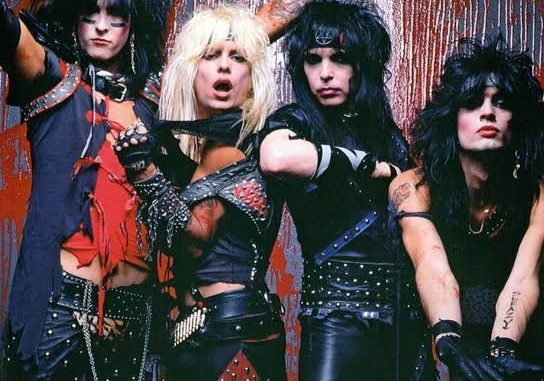
With fire, smoke, and chaos trailing behind him, Vince Neil embodied the unfiltered excess of the Sunset Strip. For fans who lived through the 1980s rock explosion, Mötley Crüe concerts weren’t just shows—they were full-blown spectacles of danger, debauchery, and unrelenting decadence. Neil’s high-energy vocals and untamed stage presence led the charge, transforming every performance into an unforgettable event that went beyond music and became an attitude, a movement, and a lifestyle.
Emerging from Los Angeles at the dawn of the decade, Mötley Crüe quickly established themselves as the ultimate symbol of rebellion. The band’s lineup—Vince Neil on vocals, Nikki Sixx on bass, Tommy Lee on drums, and Mick Mars on guitar—created a combustible mix of talent, ambition, and recklessness. But it was Neil’s piercing vocals and wild frontman persona that stood at the forefront, electrifying audiences with a charisma that was both magnetic and unpredictable.
Mötley Crüe’s shows were legendary for their theatrical excess. Pyrotechnics exploded across arenas, smoke machines choked the air, and Tommy Lee’s rotating drum kits defied gravity. Vince Neil commanded the stage in leather, eyeliner, and unapologetic swagger, leading tens of thousands of fans in raucous anthems like Shout at the Devil, Girls, Girls, Girls, and Kickstart My Heart. Each performance was less about perfection and more about energy—raw, loud, and alive. The Crüe didn’t just want their fans to hear the music; they wanted them to feel it in their bones.
Behind the spectacle, Neil became the living embodiment of rock and roll excess. His offstage reputation mirrored the chaos of the band’s music—fast cars, late nights, endless parties, and brushes with both fame and infamy. In an era defined by excess, Vince Neil personified the highs and lows of a rock star lifestyle that blurred the lines between performance and reality. Yet, despite the controversies and personal struggles, he remained the voice that defined Mötley Crüe’s identity.
The Sunset Strip in the 1980s was a breeding ground for bands competing to outdo each other in volume, image, and shock value. Still, Mötley Crüe stood apart. While other acts flirted with rebellion, the Crüe dove headfirst into it. Vince Neil wasn’t just a singer—he was the ringleader of a chaotic circus where rules didn’t apply. His ability to connect with the crowd turned every show into a communal act of rebellion, where fans weren’t just watching a concert but living out their own escape from convention.
The band’s reputation only grew as their music videos dominated MTV, bringing the Sunset Strip’s wild energy into living rooms across America. Vince Neil’s blond mane, piercing voice, and confident smirk became the visual and vocal centerpiece of Mötley Crüe’s image. To a generation of fans, he wasn’t just a performer; he was the symbol of freedom, danger, and reckless fun.
Yet, behind the glamor and fire, there was also resilience. Vince Neil and his bandmates faced personal tragedies, battles with addiction, and internal conflicts that nearly tore them apart. But each time, the Crüe returned to the stage—louder, harder, and even more determined to prove that their brand of rock and roll wasn’t just a fad. Neil’s voice, sometimes strained by years of hard living, still carried the raw passion that had ignited arenas decades before.
Today, as Mötley Crüe’s legacy continues to influence new generations, Vince Neil’s role in shaping the sound and spirit of 1980s rock remains undeniable. The band’s music has outlived the neon lights of the Sunset Strip, finding new life in films, documentaries, and reunion tours that remind fans why the Crüe became synonymous with rebellion.
This image of Vince—standing in front of fire, smoke, and chaos—perfectly captures the raw, untamed spirit that defined an era. He wasn’t polished. He wasn’t safe. But that was the point. For fans, watching Vince Neil onstage wasn’t just about hearing songs; it was about witnessing a force of nature that embodied freedom, excess, and danger in its purest form.
In the end, Vince Neil and Mötley Crüe gave audiences more than music—they gave them an attitude. They offered an escape from conformity, a chance to live on the edge, and a soundtrack to nights that could never be forgotten. And for those who were there, packed into smoky arenas and screaming every lyric, the memory is clear: it wasn’t just rock and roll—it was life lived loud, without apology.
Word count: ~704
Do you want me to frame this piece more like a fresh news report (as if it were about a new Vince Neil/Mötley Crüe project right now) or keep it as a retrospective feature about their legacy?
Leave a Reply